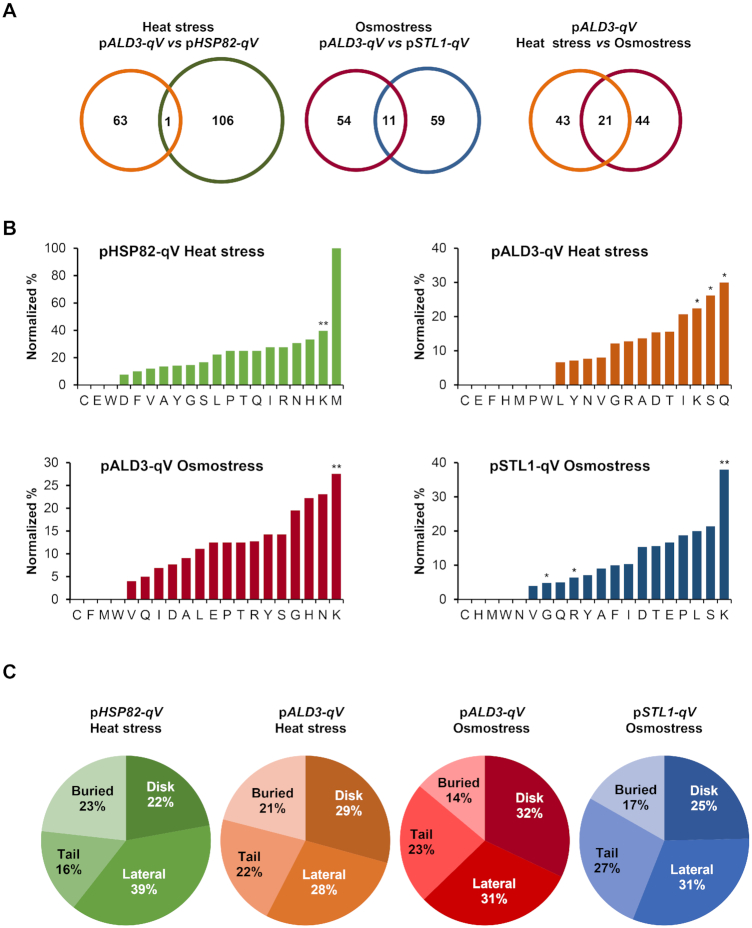Figure 3.
Histone residues required for transcription upon stress are specific for each stress condition and promoter, potentially modifiable and located on the nucleosome surface. (A) Venn diagrams showing the overlap between pALD3-qV (orange) and pHSP82-qV (green) in response to heat stress, pALD3-qV (red) and pSTL1-qV (blue) in response to osmostress, and pALD3-qV in response to heat- (orange) and osmo- (red) stresses. (B) Percentage of altered amino acids normalized by the total histone amino acid abundance for the indicated conditions. An hypergeometric test was performed to score the significance of the enrichments (*P < 0.05, **P < 0.01) (C) Spatial distribution of the histone mutants identified in the transcriptional screenings on the nucleosome structure normalized by the total histone amino acid abundance per category. Histone residues can be located on the unstructured tails (tail), inside the histone structure (buried), and on the histone surface that contacts DNA (lateral) or on the histone surface that does not contact DNA (disk).

